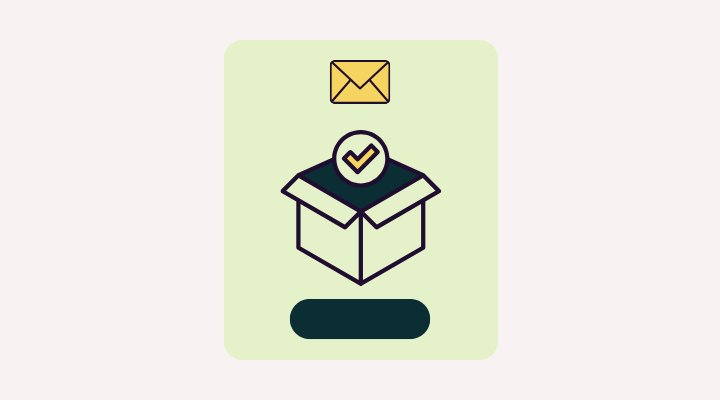Post-purchase communications refer to any message a business sends to customers after they purchase a product or a service. When used effectively, these messages are among the most significant touchpoints a business can establish with its customers.
These messages are an opportunity to show your customers that you value them and to encourage stronger ties with your brand, ensuring a positive and memorable experience.
With the right design and execution, these communications can boost customer trust, inspire repeat purchases, and motivate customers to share their experiences with others.
In this article, we’ll explore 7 categories of post-purchase messages and practical tips to maximize their impact.
1. Order Confirmation

Order confirmation messages are the first interaction you have with customers after their purchase. This communication is crucial as it sets the tone and reflects the professionalism and reliability of your business.
How to design it: Ensure the message includes a detailed order summary—products, quantity, and price—along with the estimated delivery date and tracking number, so customers can monitor their order status themselves.
Tip: Customize the message to align with your brand identity. Whether your tone is minimal, humorous, or formal, make sure this message reflects your style. A clear, concise message builds trust, while a well-designed layout ensures it stands out.
2. Shipping Updates

Shipping status updates are essential for keeping customers informed and making them feel valued. These communications reduce uncertainty and help prevent complaints caused by potential delays.
How to design it: Send updates at every stage of the shipping process, such as:
- When the order is packed,
- When it leaves the warehouse, and
- When it’s on its way to delivery.
Consistency in updates fosters a sense of stability and reliability for the customer.
Tip: Use a friendly tone and, if possible, include personalized details, such as the customer’s name or a photo of the product. This makes the communication more personal and enhances the service quality.
3. Delivery Confirmation and Experience Feedback

Delivery confirmation emails serve a dual purpose: confirming the customer has received their product and requesting feedback on their experience with your business.
How to design it: Send a message confirming the product’s delivery and encourage the customer to leave a review. Prepare simple questions to guide them, such as Was the purchasing process easy? Did the product meet your expectations?
Tip: Encourage reviews through a short survey. Offering a small incentive, like a discount coupon, can increase participation rates.
4. Product Information and Usage Tips

Providing helpful information gives customers the opportunity to fully understand and maximize the value of their purchased product. This is especially important for items with specialized functions, such as tech products.
How to design it: For example, if a customer purchases an electronic device, send a message with detailed usage instructions to guide them through their first interaction with the product. For a better experience, include a link to a YouTube video or a PDF manual.
Tip: Ensure instructions are easy to access and understand, avoiding technical jargon or overly complex language. Include additional tips, such as “Best practices for optimal performance,” and an FAQ section to address common concerns. This reinforces your support beyond the sale, creating a more complete customer experience.
5. Relevant Product Suggestions (Cross-sell & Upsell)

This type of message encourages customers to explore products that complement their initial purchase, enhancing their overall experience and encouraging additional purchases.
How to design it: For instance, if a customer buys a laptop, send a message suggesting a carry case to make their purchase more complete.
Tip: Use personalized recommendations based on customer data to avoid irrelevant suggestions that could come across as pushy. Offer products that logically enhance the original purchase.
6. Loyalty Program Invitations

If a customer is satisfied with their interaction with your business, it’s the perfect time to invite them to join a loyalty program. This encourages repeat purchases by offering benefits and rewards for shopping with you.
How to design it: As part of a thank-you message for their completed purchase, invite the customer to join your community and outline the benefits they’ll enjoy, such as discounts, exclusive offers, or redeemable points.
Tip: Highlight the benefits and create a sense of exclusivity. A compelling loyalty program can significantly boost customer retention and loyalty to your brand.
7. Customer Reactivation

When a customer hasn’t made a purchase in a while, a friendly reminder can rekindle their interest and bring them back. This approach helps re-engage customers and invites them to explore your products again.
How to design it: Send an email with a commercial incentive, such as a discount coupon or free shipping on their next purchase.
Tip: Use a friendly tone without pressuring the customer to buy immediately. Highlight new products or the benefits of an offer to spark their interest again.


